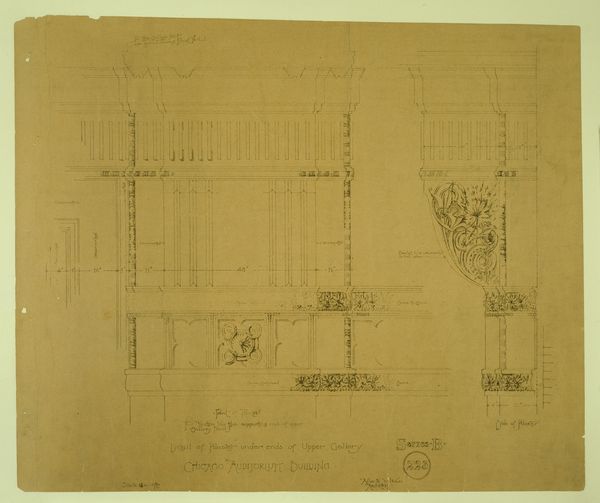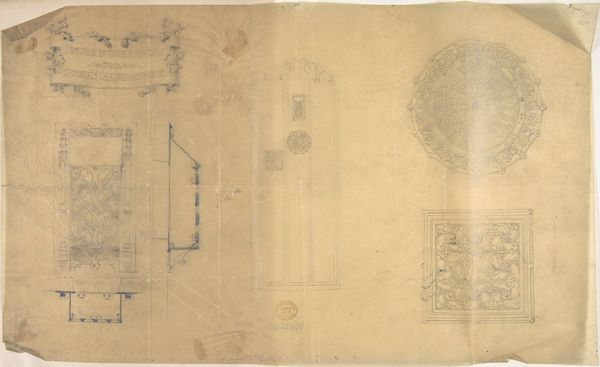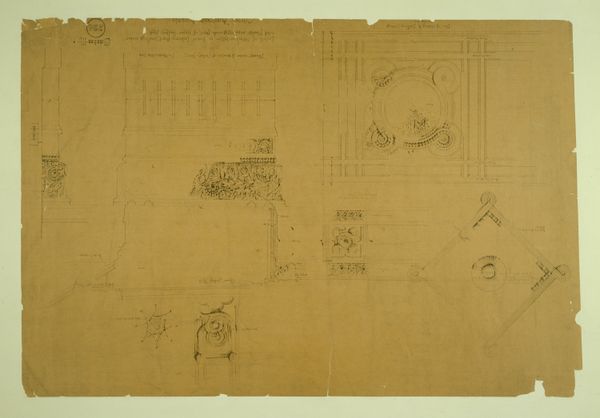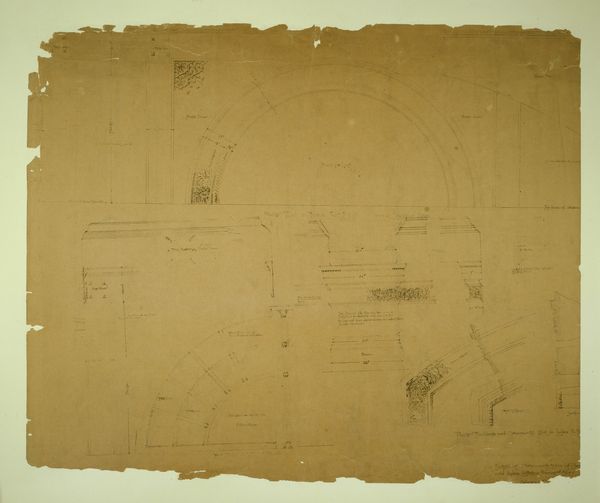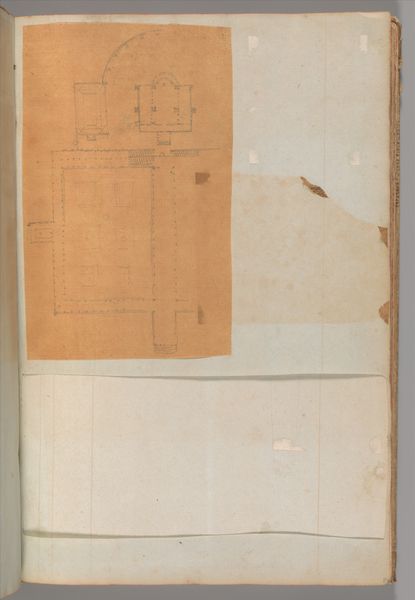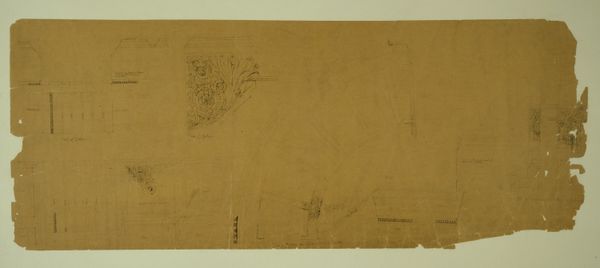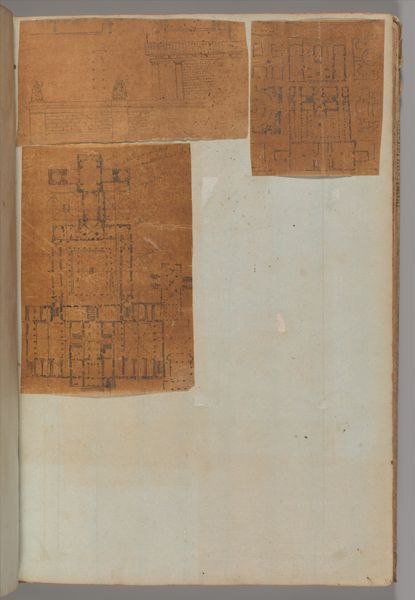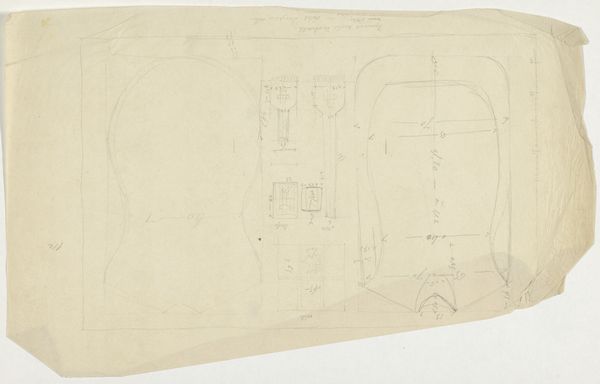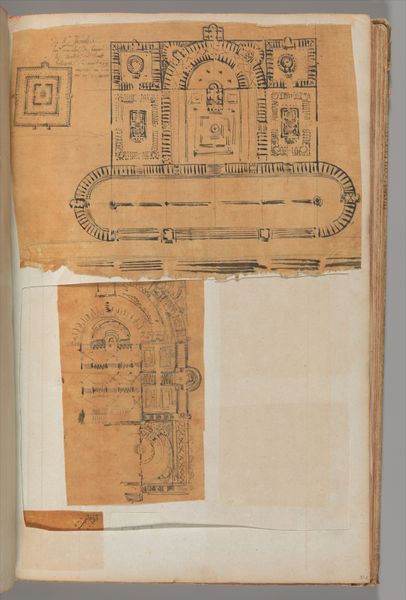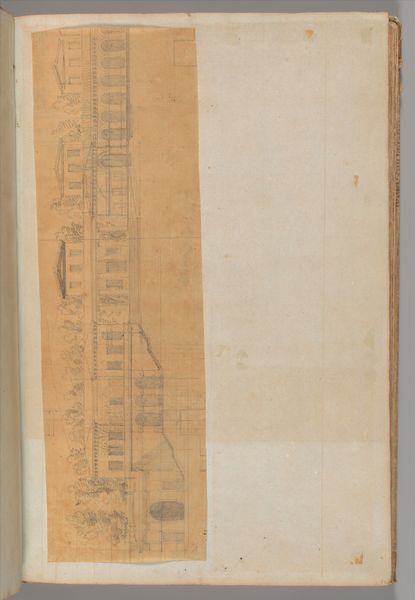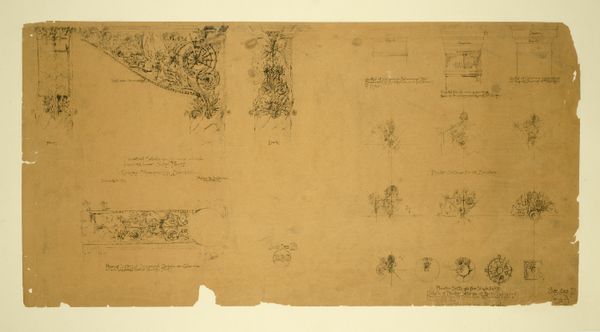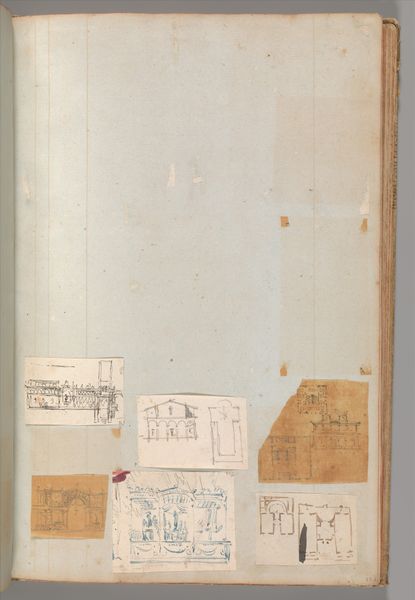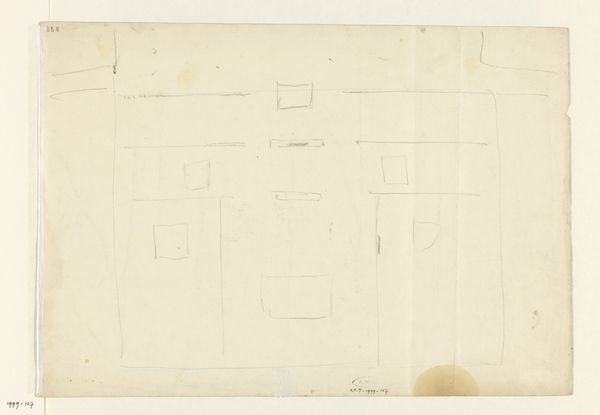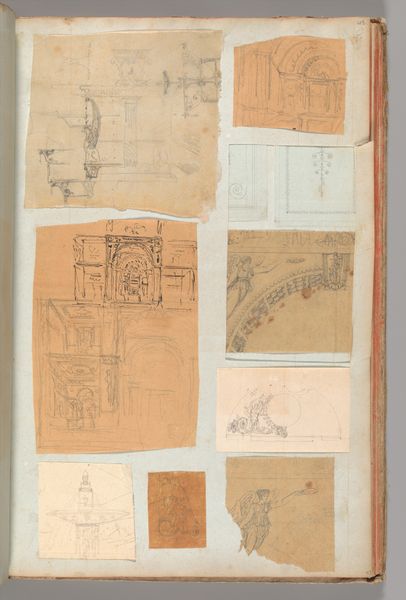
Auditorium Building, Chicago, Illinois, Plaster Details with Electric Lights c. 1887
0:00
0:00
drawing, paper, architecture
#
drawing
#
paper
#
geometric
#
architecture
Dimensions: 86.5 × 63.5 cm (34 1/16 × 25 in.)
Copyright: Public Domain
Editor: We are looking at Adler and Sullivan's "Auditorium Building, Chicago, Illinois, Plaster Details with Electric Lights" from around 1887, rendered in drawing on paper. It looks technical, almost like a blueprint. What do you see in this piece beyond its architectural function? Curator: I see a document that reveals the immense labor and collaborative processes involved in constructing not just a building, but a symbol of progress. The choice of plaster details, coupled with electric lights, speaks to the rising industrial power of Chicago. What were the social conditions underpinning this construction? Editor: That's interesting! What do you mean about social conditions? Curator: Consider the laborers involved. Who were the plasterers, the electricians, the draftsmen? What were their working conditions? How did their labor contribute to the overall message conveyed by the building - progress, wealth, and civic pride? And look at the materials. Paper for ephemeral plans, plaster, cheap and easily ornamented; yet meant to suggest permanence. Editor: So you're saying the materials themselves are communicating social messages? Curator: Exactly. The material choices aren’t simply aesthetic; they reflect the economic and social realities of the time. Think of the energy required to produce these new technologies and materials! How does this drawing on paper, intended for production, now function as an artifact in a museum? Editor: Wow, I never considered the drawing itself as evidence of larger systems at play. Curator: Understanding the means of production lets us deconstruct the image of progress and consider its cost. It prompts us to consider who benefitted, who labored, and who was excluded in this era of rapid industrial growth. Editor: I see how understanding the context of the materials adds a layer of complexity beyond just architectural aesthetics. Thanks! Curator: Indeed. Focusing on material and means allows us to connect artistic endeavors to larger historical processes and understand the complicated world of this magnificent structure and its historical importance!
Comments
No comments
Be the first to comment and join the conversation on the ultimate creative platform.
